A Testament to Connected Digital Platforms
July 28, 2023
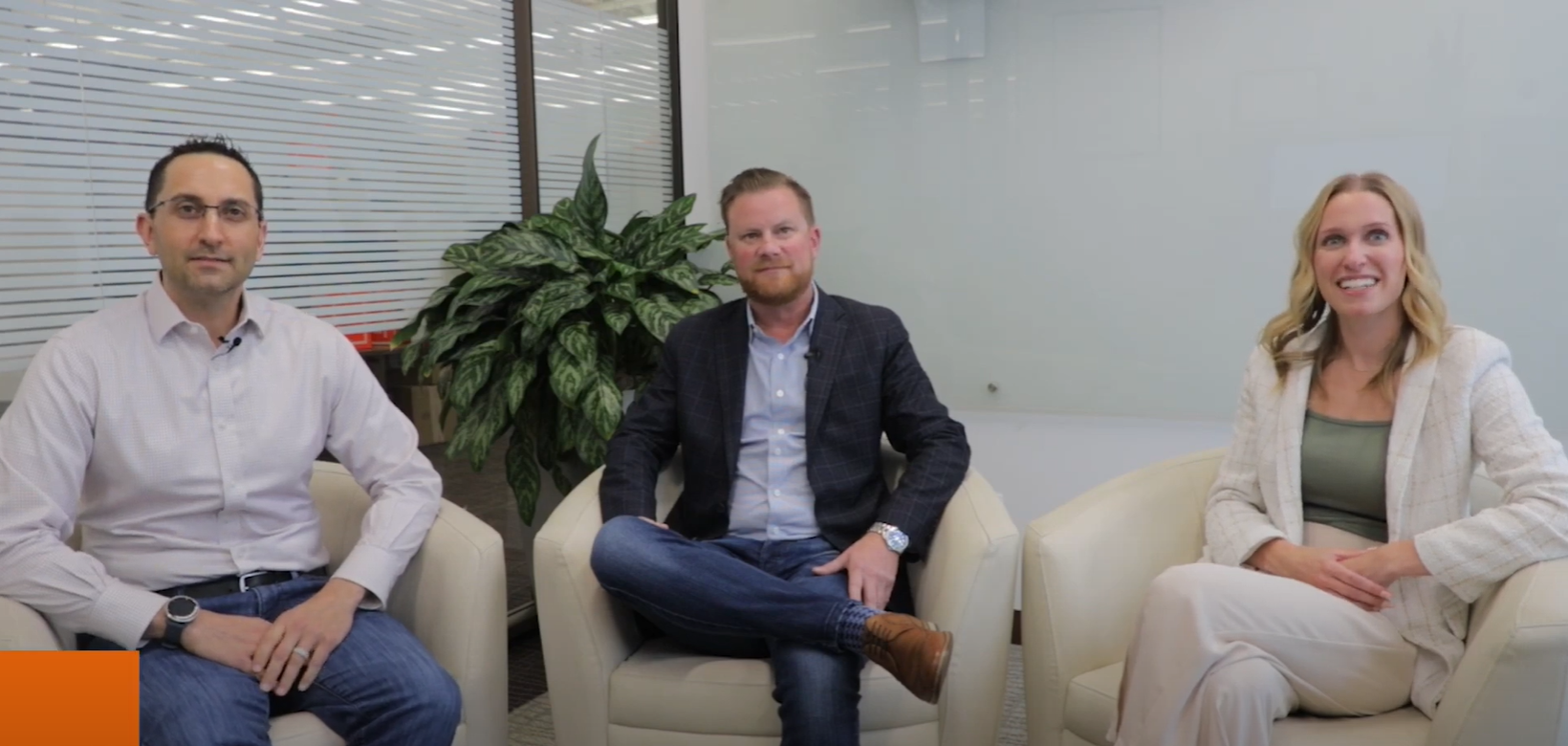
Watch the full video on YouTube here. To learn more on investing in a digital solution, visit our Why Invest page.
“What were your rail operations like before having a fully digitally connected fleet?” This question, while simple, raises the eyebrows and makes OmniTRAX’s VP of Operations and Special Projects Scott Remington chuckle just a bit.
Recently, the team at Wi-Tronix had the opportunity to sit down with longtime customer OmniTRAX and discuss some pivotal positions in our companies’ relationship. Scott Remington sits down with Wi-Tronix VP of Sales and Customer Experience Chad Jasmin and Marketing Manager Hannah Tadey to discuss OmniTRAX’s timeline from initial pain points, deciding to implement a trial of a digital solution, finally executing a full-fleet deployment, and comparing rail operations from then to now.
Both Scott and Chad come from the rail industry. Scott Remington launched his rail career with Norfolk Southern as a conductor, moving swiftly through the positions of locomotive engineer, Superintendent, Terminal Superintendent, and Road Foreman of Engines. As he made the switch to OmniTRAX in 2010, he also switched his focus to operations, and has been on the leadership team ever since.
Chad Jasmin started in the rail industry early 2000s as a conductor for Burlington Northern Santa Fe (BNSF). He progressed through several positions, from Remote Control Operator, Train Master, Terminal Manager, and Superintendent. Chad then worked for Watco Companies, the Yellowstone Valley Railroad, and at the South Kansas & Oklahoma Railroad (SKOR). To say he has used the Wi-Tronix’s digital platform is an understatement; Chad has a good connection and grasp on what customers want and need out of an onboard solution.
Wi-Tronix: What drew you and the OmniTRAX team to consider investing in a digital platform about eight years ago? What sort of benefit-cost analysis did your team perform to know it was the right choice?
Scott: OmniTRAX strives to be the leader in the technology and the short line industries. We ask the questions: what opportunities do we have to continue to advance, what can we do to improve our fuel, what can we do to improve safety, and finally what can we do to improve the mechanical of our locomotives? And what system can do that?
We did a little bit of research in the market, looked at other systems, and then determined that there really wasn’t anything else out there that could do what Wi-Tronix could do. We took a big leap of faith and said let’s give it a shot. We were very pleased.
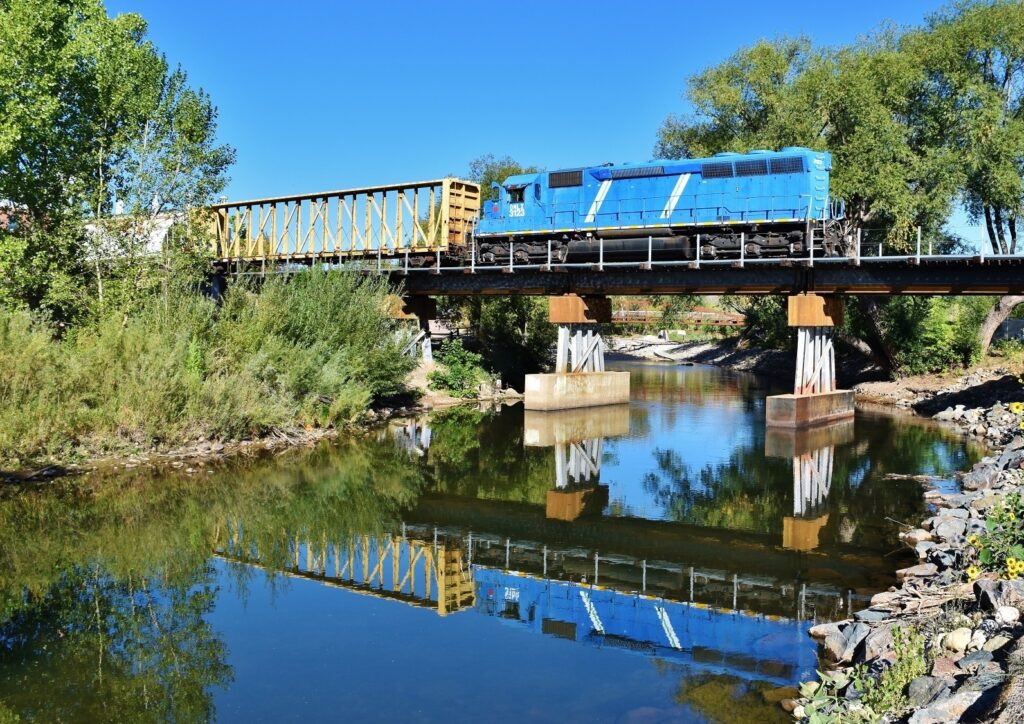
Wi-Tronix: What are some of the top benefits of the digital solution that you witnessed firsthand back when you were part of the railroad?
Chad: When I was in the field, the value that we were able to achieve was through fleet deployment. When I originally showed up to the South Kansas and Oklahoma Railroad, they had a few systems that really couldn’t get the adoption, couldn’t grow the behavior, and couldn’t get a true understanding of what the operations were incurring on a day-to-day basis.
When I was at Watco, we deployed a full suite of solutions because we weren’t doing great when it came to safety. We were able to really improve our safety culture because we were able to use the tool to educate, to inform, and to take quick actions as things were happening.
For example, if an overspeed scenario were to take place, we identified the behavior and implemented a corrective action to really start that culture shift. We were also able to ensure we were using the right asset, being good stewards of what we had, making sure that we had good locomotive utilization, and checking if we had high idle.
As we found those areas of opportunities, we would then address them through either process changes or an update to our schedule to make sure that we were actually conserving where we could, spending the right money where needed, and being responsible for the assets that we had.
That was back in 2008-09, now what Wi-Tronix has done is continue to grow with the railroads. We’re deploying more technologies for emissions and accounting for things you’ll see out in California. You’ll also see that video data has become much more important, so some of our customers are able to leverage locomotive productivity, labor productivity, and regulatory compliance.
Wi-Tronix: How were you reporting and what were your processes like before OmniTRAX invested in this digital approach? How did they change after you implemented the full fleet deployment?
Scott: We were reactive in a lot of our processes. We were doing physical downloads and it can be very challenging for people to understand how to complete and read the downloads. It made it so much more difficult for us to be able to investigate incidents. We didn’t have cameras, so when you have crossing incidents, you knew it was your word versus someone else’s word.
And of course, the downloads: you don’t have the video, you don’t have the data we have with Wi-Tronix where I can tell you right now, you can’t even put a price on what that saves you in the event of an incident.
Again, prior to that it was physical downloads, and if we think about the fuel, for example, we were out there writing fuel readings down from the fuel tanks.
For daily basis tools, without Wi-Tronix, you don’t have that real-time fuel reporting or real-time mechanical data. You’re having to dive a lot deeper into what really happened here versus being able to just have the data.
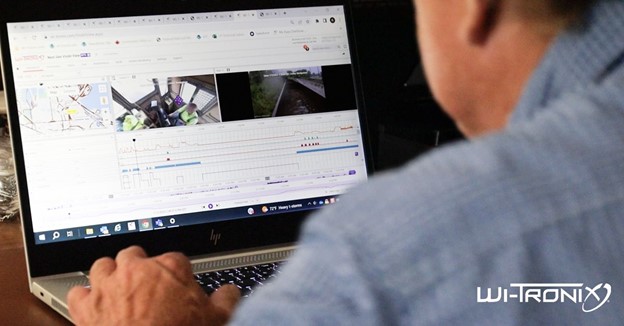
Chad: I used the Wi-Tronix solution even for engaging with mayors of towns who had complaints of locomotives idling all the time, blowing through the crossing, or blowing really long periods of time; all these “absolutes.” But with remote downloads and remote access, having the traceability and trackability to be able to take a fleet map picture and say “here you go, Mr. Mayor, there’s actually no locomotives located there that were idling,” or “the locomotives that were there that were idling, they pulled up, they stopped for [X period of time] and then they left.” Those are the situations when you get this data, you’re able to start answering and solving problems where people have all these assumptions of what the railroad is doing versus actually having hard facts.
When you’re able to show data quickly, you start getting a lot more buy-in. That was one of the things that I noticed when I was working with a lot of the mayors and showing them the tools and technology that Wi-Tronix provided, and then we would get more support.
The railroad I was affiliated with at the time would actually get additional funding to do crossing rehabs and projects like that because they’re like “OK, I can actually see the value, I can see how many times that the train actually goes across this crossing, and what times are go across.”
We even use that information with some of the school districts to check when the school buses generally crossed a certain area. We did this to ensure we didn’t have a train schedule that was impeding the children, or we were switching over a crossing.
Until you readily have that data and information, looking at how your operation is impacting people in your community is really difficult and you’re answering a lot of questions with assumptions. I was able to start addressing questions with facts and be more transparent, and I think we all agree that the more transparent you are, the more people trust you.
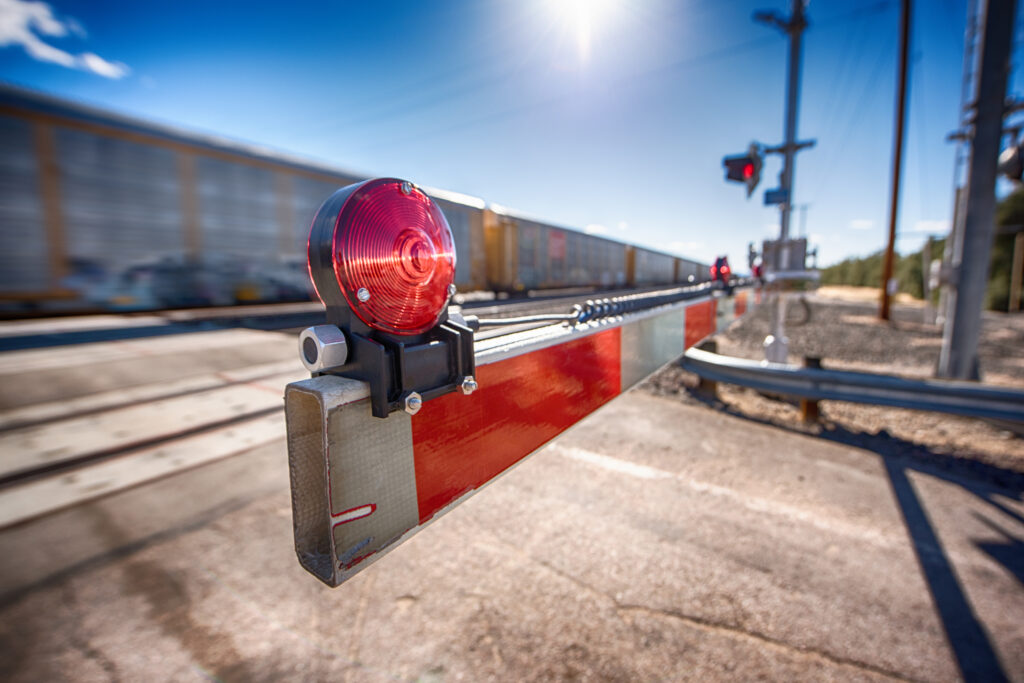
Wi-Tronix: We’ve seen that lately in the news as well too – transparency is key, especially in our industry. Is there any system or service improvement that you’ve seen on your railroad that you weren’t necessarily expecting but you’re like “wow, this one’s it, this one’s innovative?”
Scott: Oftentimes, anything new you’re skeptical about. You think, “is this really going to work? Is this really going to drive savings?” I feel like anything that’s being sold in the technology space pitches “you’re going to achieve these results.”
Well, OmniTRAX was actually able to look back and say “since 2015, if we look at it, we probably saved 35% of what we consider idle reduction.” It was a significant driver of savings in both labor and fuel costs, and then when you look at the mechanical aspect, we actually went back and, as an example, it was in 2021, we replaced maybe 13 traction motors and, in the years, prior we were probably averaging 30+ traction motors a year. We would go back and find that a lot of them went through excess tonnage, so we asked ourselves, “is our train the right size for the power?”
So, it’s that type of data that people go back and actually utilize and say we need to make some adjustments here in terms of how we’re doing it. If we didn’t have this data then obviously we wouldn’t be able to do it. We actually are able to go back and say that we really have seen the savings.
Chad: For me, it really gets to locomotive utilization. We always hear “we don’t have enough power” and then you look at how much the power is actually being used in a yard or road power. One of the things that I was able to do during my time in the railroad was get ready to lease additional locomotives. As I started to understand the profile and operational needs, I was able to figure out that not only did I not need to lease those locomotives, I was actually able to give four locomotives back to the business to reprioritize them elsewhere.
One of the other really cool things we did was tracking the miles from a daily perspective so you could say “how many miles did that local crew go versus how much labor time was spent?” We plan for a crew to be 8 hours, the crew continues to be 10 hours, the miles seem to be about right, but why do we continue to have overtime?
So, I was able to really adjust and verify what we were planning versus what was occurring in the field, asking pointed questions, and figuring out where to put capital. A lot of times if you look at the data you can actually take it into your annual planning and start predicting more accurate budgets, meaning you can have better financial accountability. Planning more downstream – those are some of the things that are used not just in real time, but also historical data to measure against your plan, edit your plan, remeasure against your plan, and then continue that process of honing efficiencies.
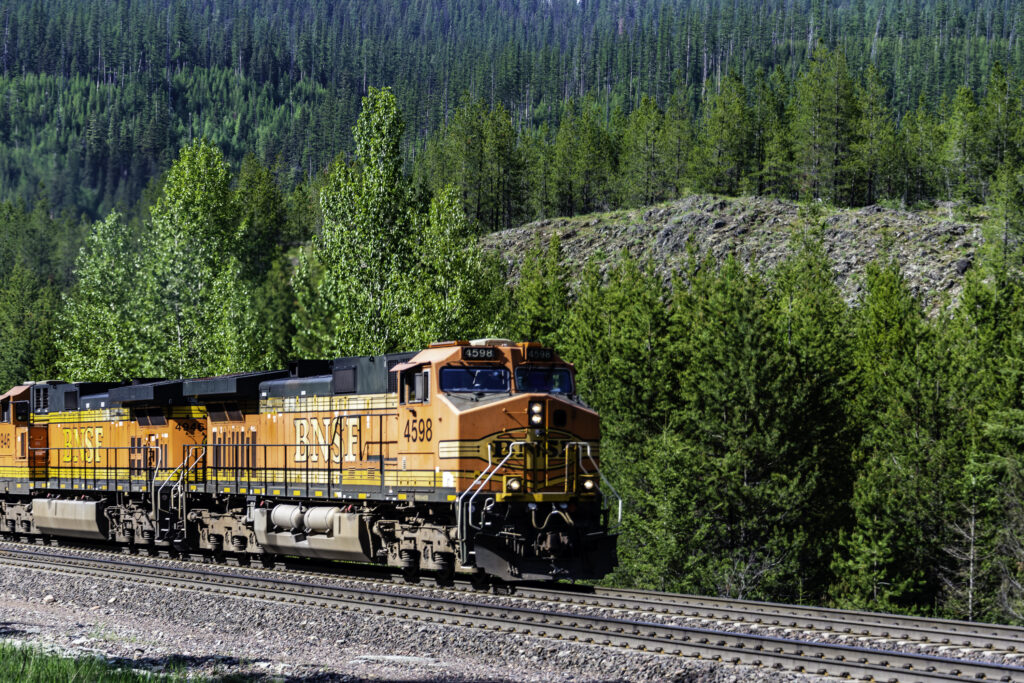
Wi-Tronix: Why should railroads go with Violet? What makes Wi-Tronix different?
Chad: One thing that I really enjoy about working here is the breadth of technology. Wi-Tronix continues to innovate, we continue to drive software and new software releases: five to six times a year. The great thing from a short line perspective – answering the inevitable question of why they should invest – is we work with a lot of Fortune 500 companies, big Class I railroads, and they bring feedback to the table at Wi-Tronix: “hey, we need to solve these types of problems.” Well, that just cascades down to all our customers and that is really exciting because sometimes people assume only the class Is can do it.
Well, most of what we do for Class I customers just translates down to the short lines, such as our Securement Alert. We have a Securement Alert that was created by one of our customers up in Canada, and now it has cascaded down to all our customers, meaning everyone gets that added value.
We have a Community, meaning we collect customer ideas and inputs so OmniTRAX can share an idea that that maybe CN or CPKC is looking to drive, and everyone gets to collaborate on it.
We have user events where we like to bring everybody together; we want to make sure that stakeholders are getting the most value out of our solution.
We invest in a Customer Success team. We know technology is hard; installing our product and not building into the processes and workflows, customers are not going to get the value from it. We understand that, so we make investments to combat that.
We take a lot of best practices from OmniTRAX, from Watco, from Iowa Interstate, Paducah and Louisville, and we make sure to share that among our customers and to get value. The value that I see in Wi-Tronix is as we expose the first and last mile for the short lines, which is such a critical thing. The more and more time you can use data to work with your Class I partners and “hey, we went to interchange here, we need your help,” you’re able to use factual information, I believe that just further accelerates what we’re doing in the industry. It provides more information, the supply chain is getting more and more critical, so more precise time when things are switching, where people are occurring at, will only provide more information to the downstream customers.
We know that downstream customers are asking for more visibility, and we believe that with this information, integrating into our business systems and then sharing that information with our customers is a win-win for everybody. I believe Wi-Tronix does that best.
I’ve been a user of Wi-Tronix since 2007 in my days at BNSF and have been using it ever since, now I get to sell and support it, and I just love the industry. Wi-Tronix takes that step forward and wants to involve everybody into the process and make sure that we’re delivering value every year.
Scott: Absolutely, I think one thing I want to start with is the people. The customer support is obviously very critical to us, so I think that Wi-Tronix has always been very responsive and critical in the time that we need something reviewed. It’s always right on the spot and they’re able to follow back up. We have a great Customer Success Manager that’s always very responsive.
Additionally, the technology piece is always continuing to evolve. Not saying static in terms of product offering or event product direction but looking at things like AI around the crossings and those type of solutions in regard to being proactive.
That’s one thing for us, and we want to continue to be on the leading edge of the short line industry when it comes to using technology, so when new solutions come up we’re always somewhat of a guinea pig. So that’s one thing we appreciate with Wi-Tronix.
Chad: Thank you, to follow on that, we’re working on a very exciting project with you guys on deploying the first electric locomotive into switching type-operations. Those are the things that Wi-Tronix does; that excites us, continuing to develop, continuing to innovate, and take innovative approaches to technology, and help cascade those things and make those into long-term processes. We’re very excited and appreciate all the all the work and effort and time that both teams put together to make sure it’s successful.
